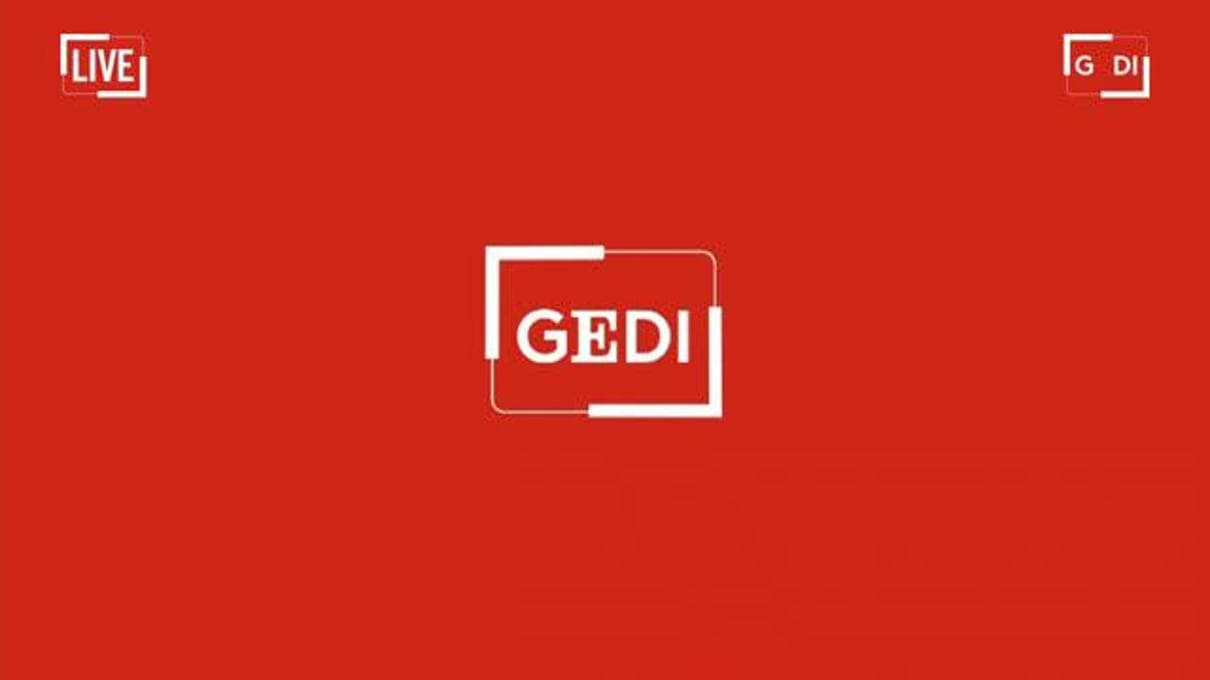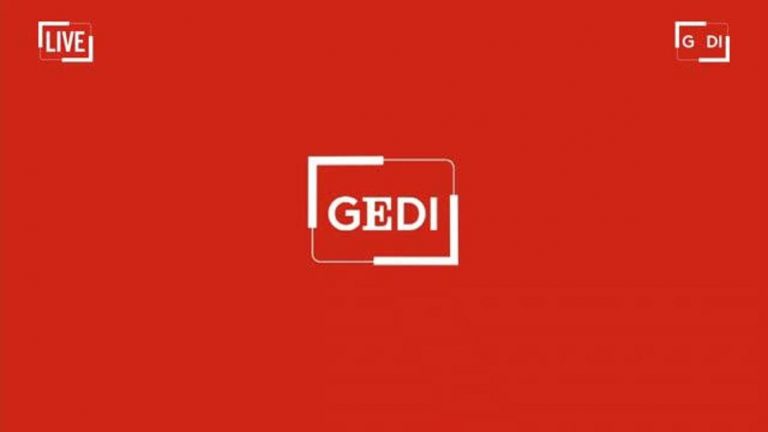Brand and marketing departments are vital to a company’s success in today’s competitive market. This guide delves into the core functions, strategies, and challenges faced by these departments. From defining roles and responsibilities to integrating digital marketing efforts, we’ll explore the essential elements of modern brand management.
Understanding the intricacies of brand strategy and positioning is crucial for effective marketing. This exploration covers the steps involved in developing a robust brand strategy, examining different positioning strategies, and outlining the key elements of a brand’s value proposition. The discussion also highlights the importance of adapting strategies to diverse target audiences and leveraging various marketing channels.
Defining Brand and Marketing Department
A brand and marketing department is a critical component of any organization, playing a pivotal role in shaping its image, driving sales, and fostering customer loyalty. This department bridges the gap between the company’s internal values and the external market, ensuring a consistent and compelling brand experience for all stakeholders.The core function of a brand and marketing department is to develop and execute strategies that position the company and its products or services effectively within the target market.
This involves a comprehensive understanding of the competitive landscape, consumer behavior, and market trends. Crucially, the department ensures brand consistency across all touchpoints, from advertising campaigns to customer service interactions.
Core Functions of a Brand and Marketing Department
The brand and marketing department is responsible for a wide array of functions. These range from market research and analysis to campaign execution and performance measurement. A successful department seamlessly integrates these functions to achieve strategic objectives.
- Market Research and Analysis: This function involves gathering and interpreting data about the target market, including consumer preferences, needs, and behaviors. This data informs decisions on product development, pricing strategies, and marketing campaigns.
- Brand Management: Maintaining a consistent and compelling brand identity across all platforms is crucial. This involves defining the brand’s values, personality, and messaging, and ensuring that these elements are reflected in all marketing materials and communications.
- Marketing Strategy Development: Crafting effective marketing plans is essential to achieving business objectives. This includes defining target audiences, setting measurable goals, and selecting the appropriate marketing channels.
- Campaign Execution: Bringing marketing strategies to life requires skillful implementation. This involves managing the creative process, coordinating with various teams, and ensuring timely delivery of marketing materials.
- Performance Measurement and Analysis: Tracking and evaluating the results of marketing campaigns is vital for optimization and future strategy development. This involves analyzing key performance indicators (KPIs) and making data-driven adjustments to maximize return on investment (ROI).
Roles and Responsibilities Within a Brand and Marketing Department
A brand and marketing department often comprises various roles, each with specific responsibilities.
- Brand Manager: Oversees the brand’s identity and ensures consistency across all marketing efforts. They define brand guidelines, monitor brand perception, and lead brand development initiatives.
- Marketing Manager: Responsible for the overall marketing strategy, budgeting, and execution of campaigns. They oversee various marketing channels and coordinate with other teams.
- Digital Marketing Specialist: Focuses on online marketing activities, including , social media management, content creation, and paid advertising. They leverage digital platforms to engage target audiences and drive traffic.
- Content Marketing Specialist: Develops and manages content strategies to attract and engage target audiences. They create engaging content for various platforms, including blogs, articles, and social media posts.
- Graphic Designer: Creates visual elements for marketing materials, such as logos, brochures, and advertisements. They ensure that visual communications align with the brand’s identity.
Organizational Structures for Brand and Marketing Departments
Different organizational structures can be implemented within a brand and marketing department.
- Functional Structure: Departments are organized based on specific functions, such as advertising, public relations, and digital marketing. This structure fosters expertise in each area but can sometimes lead to silos.
- Matrix Structure: Employees report to multiple managers, often combining functional expertise with project-based teams. This structure promotes collaboration but can be complex to manage.
- Brand-focused Structure: The department prioritizes brand building and consistency across all marketing activities. This structure often emphasizes brand messaging and identity in all marketing efforts.
Key Differences Between Traditional and Modern Brand and Marketing Departments
| Feature | Traditional Brand and Marketing Department | Modern Brand and Marketing Department |
|---|---|---|
| Focus | Product-centric, mass marketing | Customer-centric, personalized experiences |
| Channels | Primarily print, broadcast, and direct mail | Diverse channels, including digital, social media, and mobile |
| Data Usage | Limited data analysis, often reactive | Extensive data analysis, proactive strategy adjustments |
| Technology | Basic tools and software | Advanced technologies, data analytics platforms |
| Engagement | One-way communication | Interactive and two-way communication |
Brand Strategy and Positioning
A robust brand strategy is fundamental to a company’s success in today’s competitive marketplace. It provides a roadmap for achieving brand goals and guides marketing efforts, ensuring consistent messaging and a unified brand experience across all touchpoints. Effective positioning differentiates a brand from competitors, creating a clear and compelling value proposition for the target audience.Developing a strong brand strategy requires a deep understanding of the target audience, market trends, and competitive landscape.
A well-defined positioning strategy is crucial for marketing campaigns to resonate with the desired customer base and effectively communicate the unique value of the brand.
Developing a Comprehensive Brand Strategy
A comprehensive brand strategy involves several key steps. Understanding the current brand identity, including its values, mission, and target audience, is crucial for defining a compelling vision. This initial analysis informs the next steps. Market research and competitor analysis provide valuable insights into market trends, customer needs, and competitive strengths and weaknesses. A SWOT analysis helps identify opportunities and challenges.
This process results in a clear understanding of the market context.
Brand Positioning and Marketing Efforts
Brand positioning significantly impacts marketing efforts. It dictates the messaging, tone, and channels used to reach the target audience. A well-defined positioning strategy ensures marketing campaigns are consistent with the brand’s overall identity, leading to increased brand recognition and customer loyalty. A consistent brand image across all marketing platforms fosters trust and strengthens customer relationships.
Different Brand Positioning Strategies
Various positioning strategies cater to different market needs and brand objectives. A value-based positioning strategy focuses on offering superior value for the price. This approach emphasizes affordability and quality, attracting budget-conscious consumers. A premium positioning strategy emphasizes exclusivity, high quality, and prestige. This strategy appeals to customers seeking luxury and status.
A niche positioning strategy focuses on a specific segment of the market, such as a particular demographic or interest group. This approach allows for highly targeted marketing efforts and a strong understanding of customer needs.
Brand Value Proposition
A brand’s value proposition summarizes the unique benefits a brand offers to its target audience. It clearly articulates the value exchange between the brand and the customer. This table Artikels key elements:
| Element | Description |
|---|---|
| Target Audience | Clearly defined demographic and psychographic profile of the ideal customer. |
| Value Proposition Statement | A concise and compelling statement that communicates the core benefit the brand offers. |
| Unique Selling Proposition (USP) | The specific feature or benefit that differentiates the brand from competitors. |
| Brand Promise | The commitment the brand makes to its customers, outlining the experience they can expect. |
| Supporting Evidence | Data, testimonials, and other evidence that validates the brand’s claims. |
Marketing Strategies and Tactics
Effective marketing strategies are crucial for achieving business objectives and connecting with target audiences. They encompass a range of approaches, from defining the ideal customer to crafting compelling messages and utilizing diverse channels. This section delves into various marketing strategies and tactics, emphasizing adaptability and effectiveness across different product types and target groups.
Diverse Marketing Strategies for Products and Services
A multitude of marketing strategies are available, each suited to specific products or services. Product-focused strategies might emphasize unique selling propositions, highlighting features that differentiate the offering from competitors. For example, emphasizing superior quality or innovative design can be pivotal for attracting customers. Service-focused strategies often prioritize building customer relationships and demonstrating value through exceptional service experiences.
Examples include loyalty programs, personalized support, and proactive customer engagement.
Adapting Strategies for Various Target Audiences
Understanding the target audience is paramount to successful marketing. Tailoring strategies to specific demographics, psychographics, and needs yields better results. For instance, a marketing campaign for a youth-oriented product might focus on social media engagement and viral trends, whereas a campaign targeting senior citizens might prioritize print media and community outreach. Effective segmentation ensures the marketing message resonates with the intended audience.
Marketing Tactics Across Various Channels
Different marketing channels offer distinct advantages. Social media platforms, for instance, allow for direct interaction with customers, building brand awareness, and facilitating community engagement. Email marketing remains a valuable tool for nurturing leads and promoting specific products or services. Content marketing, such as blog posts or articles, positions the brand as an authority and attracts potential customers through valuable information.
Illustrative Table of Marketing Channels
| Marketing Channel | Pros | Cons |
|---|---|---|
| Social Media (e.g., Instagram, Facebook) | Direct customer interaction, brand building, community engagement, real-time feedback. | Requires consistent posting, potential for negative feedback, algorithm changes can impact visibility. |
| Email Marketing | Targeted campaigns, personalized messages, measurable results, cost-effective. | Can be perceived as intrusive if not managed well, deliverability issues can occur. |
| Search Engine Optimization () | Organic traffic, long-term visibility, cost-effective in the long run. | Takes time to see results, requires ongoing optimization, competition for top rankings. |
| Paid Advertising (e.g., Google Ads, social media ads) | Targeted reach, quick results, measurable ROI. | Can be expensive, requires careful targeting to avoid wasted spend, algorithm changes can impact results. |
| Content Marketing (e.g., blog posts, articles) | Positions brand as an authority, attracts organic traffic, builds trust. | Requires consistent creation, time to see results, may not always directly drive sales. |
Digital Marketing Integration
Digital marketing is no longer a separate entity but a crucial component woven into the fabric of a comprehensive brand and marketing strategy. Its integration allows for a cohesive and impactful approach, leveraging digital channels to amplify traditional efforts and build stronger customer relationships. This approach emphasizes measurable results and adaptability to evolving consumer behavior.Digital marketing strategies are essential for contemporary brand building and fostering meaningful customer interactions.
By employing targeted online campaigns, businesses can directly connect with their audience, building brand awareness and loyalty, while simultaneously providing a personalized customer journey.
How Digital Marketing Fits into the Overall Strategy
Digital marketing seamlessly integrates with a broader brand and marketing strategy by providing measurable channels for reaching target audiences. It allows for precise targeting based on demographics, interests, and behaviors, maximizing the impact of marketing spend. Digital channels also offer opportunities for real-time interaction and feedback, enabling brands to adapt their strategies based on immediate responses.
Importance of Digital Marketing for Brand Building and Customer Engagement
Digital marketing is pivotal in establishing a strong brand presence. By consistently engaging with customers through various online platforms, brands can foster a deeper connection, build trust, and cultivate brand loyalty. Furthermore, digital marketing allows for targeted communication, ensuring that messages resonate with specific audience segments, leading to higher engagement rates and conversions. This direct interaction and engagement also provide valuable insights into customer preferences and needs, enabling businesses to refine their offerings and tailor their strategies.
Key Digital Marketing Tools and Platforms
Several digital marketing tools and platforms are crucial for effective campaigns. Search engine optimization () tools like SEMrush and Ahrefs help improve website rankings. Social media management tools, such as Hootsuite and Buffer, facilitate streamlined content scheduling and engagement. Email marketing platforms, like Mailchimp and Constant Contact, are used for targeted communication. Paid advertising platforms like Google Ads and social media ads are critical for reaching specific demographics and interests.
Content management systems (CMS) such as WordPress allow for the creation and management of website content.
Comparison of Digital Marketing Metrics
| Metric | Description | How to Measure | Importance |
|---|---|---|---|
| Website Traffic | The number of visitors to a website. | Using website analytics tools like Google Analytics. | Indicates the reach and visibility of a website. |
| Conversion Rate | The percentage of visitors who complete a desired action. | Tracking conversions using website analytics. | Measures the effectiveness of marketing efforts in driving desired outcomes. |
| Customer Acquisition Cost (CAC) | The cost of acquiring a new customer. | Calculating the total marketing spend divided by the number of new customers acquired. | Indicates the efficiency of marketing campaigns. |
| Return on Investment (ROI) | The profitability of a marketing campaign. | Comparing the revenue generated by the campaign to the cost of the campaign. | Demonstrates the effectiveness of marketing investments. |
This table provides a concise overview of essential digital marketing metrics. Each metric offers unique insights into campaign performance, enabling data-driven decisions.
Integrating Digital Marketing with Traditional Marketing Efforts
Integrating digital and traditional marketing approaches creates a holistic strategy. For instance, print advertisements can include QR codes that link to interactive landing pages. Events can leverage social media to promote and engage attendees. Email campaigns can be used to follow up with leads generated from offline advertising. This integrated approach ensures a seamless customer experience and maximizes the impact of marketing efforts.
Role of Data Analysis in Digital Marketing
Data analysis is fundamental to digital marketing. Analyzing website traffic, user behavior, and campaign performance allows marketers to identify what works and what doesn’t. This data-driven approach enables adjustments to strategies and campaigns in real time, leading to better outcomes. Data analysis helps understand customer preferences and adapt messaging for maximum impact.
Importance of in Digital Marketing
Search Engine Optimization () is crucial for improving organic search visibility. By optimizing website content and structure for relevant s, businesses can attract more qualified traffic to their sites. strategies focus on building high-quality content, improving website speed and user experience, and acquiring high-quality backlinks. A strong strategy improves brand visibility and drives organic traffic to a website.
Examples of Successful Digital Marketing Campaigns
Many successful campaigns highlight the power of digital marketing. For instance, Dollar Shave Club’s viral video campaign effectively used YouTube to build brand awareness and attract customers. Similarly, Airbnb’s targeted social media campaigns effectively showcased diverse experiences and destinations, building a strong brand image. These examples demonstrate the potential of digital marketing to achieve significant results when implemented effectively.
Measuring and Evaluating Performance
Assessing the effectiveness of brand and marketing efforts is crucial for continuous improvement and achieving desired outcomes. Regular evaluation allows for adjustments to strategies and tactics, ensuring alignment with overall business objectives. This section details various metrics and methods for measuring performance.
Key Performance Indicators (KPIs)
Tracking key performance indicators (KPIs) is vital for understanding the success of brand and marketing initiatives. KPIs provide quantifiable data that reflects progress towards goals. They are the essential building blocks for evaluating performance across all marketing activities.
- Website Traffic and Engagement: Website traffic, bounce rate, time on site, and conversion rates are crucial metrics for assessing website performance and user engagement. These metrics reveal how effectively the website is attracting and retaining visitors, leading to desired actions like purchases or sign-ups. High bounce rates and low time on site might indicate areas needing improvement in website design, content, or user experience.
- Sales and Revenue: Sales figures and revenue generated directly reflect the impact of marketing efforts on the bottom line. Analyzing sales data by marketing channel allows for precise attribution of revenue to specific campaigns and strategies. Increased sales and revenue demonstrate successful campaigns that effectively convert leads into paying customers.
- Customer Acquisition Cost (CAC): Understanding the cost associated with acquiring a new customer is essential for evaluating the efficiency of marketing spend. Low CAC signifies a cost-effective marketing approach, while high CAC might suggest optimizing marketing channels or improving conversion rates. CAC can be further broken down by marketing channel to understand the return on investment for each channel.
- Customer Lifetime Value (CLTV): CLTV is the projected revenue a customer will generate throughout their relationship with a company. High CLTV demonstrates that marketing efforts are attracting and retaining valuable customers. Analyzing CLTV alongside CAC helps to assess the profitability of marketing campaigns.
- Brand Awareness and Sentiment: Measuring brand awareness through surveys and social media monitoring reveals the level of recognition and positive perception of the brand. Monitoring brand sentiment helps gauge public opinion and identify potential issues. Positive brand sentiment indicates a strong brand image and positive perception amongst the target audience.
Analyzing Marketing Campaign Effectiveness
Effective analysis of marketing campaign performance involves meticulous tracking and examination of data to identify successful strategies and areas requiring improvement. By carefully examining data from various sources, a comprehensive understanding of campaign effectiveness is achieved.
- Attribution Modeling: Attribution modeling helps determine the contribution of various marketing channels and touchpoints to conversions. Different models (e.g., first-touch, last-touch, linear) provide different insights into the customer journey. Choosing the right model depends on the specific goals and characteristics of the campaigns being analyzed.
- A/B Testing: A/B testing involves comparing different versions of marketing materials (e.g., ads, landing pages) to identify which performs better. This iterative process allows for optimization of marketing content and strategies. The results of A/B testing provide actionable insights to improve marketing campaigns.
- Marketing Mix Modeling (MMM): MMM is a statistical technique that assesses the impact of various marketing activities on sales and revenue. This data-driven approach allows for quantifying the effectiveness of different marketing elements. The results of MMM can help allocate resources efficiently across various marketing initiatives.
Common KPIs for Brand and Marketing Departments
The following table summarizes common KPIs for brand and marketing departments.
| KPI | Description | How to Measure |
|---|---|---|
| Website Traffic | Number of visitors to the website | Website analytics tools |
| Conversion Rate | Percentage of visitors who complete a desired action | Website analytics tools |
| Customer Acquisition Cost (CAC) | Cost of acquiring a new customer | Divide total marketing spend by the number of new customers acquired |
| Customer Lifetime Value (CLTV) | Projected revenue a customer will generate throughout their relationship | Project future revenue based on past customer behavior |
| Brand Awareness | Percentage of target audience who recognize the brand | Surveys, social media monitoring |
Examples of Dashboards
Dashboards are visual representations of key metrics. They allow for easy monitoring of performance and identification of trends.
- Website Performance Dashboard: This dashboard displays website traffic, conversion rates, bounce rates, and other key metrics to assess website performance. The dashboard allows for immediate identification of issues and opportunities for improvement.
- Marketing Campaign Performance Dashboard: This dashboard tracks the performance of various marketing campaigns, providing insights into ROI, cost per acquisition, and other important metrics. This visualization helps to allocate resources effectively and optimize campaign performance.
- Customer Segmentation Dashboard: This dashboard visualizes customer segments based on their demographics, purchase history, and engagement with the brand. This dashboard enables targeted marketing efforts and personalized customer experiences.
Challenges and Trends
The brand and marketing landscape is constantly evolving, demanding agility and adaptation from organizations. Navigating this dynamic environment requires a deep understanding of current challenges, emerging trends, and the ability to proactively adjust strategies to maintain relevance and achieve desired outcomes. This section delves into these critical aspects, offering insights into how brands can successfully adapt and thrive in the face of change.
Current Challenges Faced by Brand and Marketing Departments
The modern marketing department faces a multitude of challenges, including the need to reach increasingly fragmented audiences, maintain brand consistency across various touchpoints, and measure the ROI of marketing campaigns with greater precision. Budget constraints and the pressure to demonstrate tangible results often complicate matters. Furthermore, the constant influx of new technologies and platforms requires continuous learning and adaptation.
Emerging Trends and Technologies Impacting the Field
Several trends and technologies are reshaping the marketing landscape. Artificial intelligence (AI) is transforming customer interactions, enabling personalized experiences and streamlining operations. The rise of the metaverse presents new opportunities for immersive brand engagement. Furthermore, the increasing importance of data analytics is driving the development of more sophisticated marketing strategies and allowing for more informed decision-making. The shift towards sustainability is also shaping brand perception, with consumers increasingly valuing ethical and environmentally conscious practices.
Adapting to Changing Market Conditions
Brands must be prepared to adapt to evolving market conditions, including shifting consumer preferences, technological advancements, and economic fluctuations. Proactive market research and a deep understanding of consumer behavior are essential to staying ahead of the curve. Agile marketing strategies that allow for quick adjustments to changing circumstances are crucial for maintaining a competitive edge.
Examples of Brands Successfully Addressing Marketing Challenges
Several brands have successfully addressed significant marketing challenges. For example, Patagonia, through its commitment to sustainability, has resonated with environmentally conscious consumers, creating a strong brand identity. Similarly, companies like Dollar Shave Club, through innovative marketing strategies and direct-to-consumer models, have disrupted traditional industries. These examples highlight the importance of understanding the target audience and adapting to changing consumer preferences.
Impact of Social Media on Brand and Marketing Strategies
Social media has fundamentally transformed brand and marketing strategies. It provides direct communication channels with consumers, fostering engagement and building brand loyalty. Effective social media management requires understanding platform-specific algorithms and creating content tailored to each platform. This often necessitates a multi-platform approach to maximize reach and engagement. Social listening tools help to track conversations about the brand and provide valuable insights for adjustments to strategy.
Insights into the Future of Brand and Marketing
The future of brand and marketing is characterized by increasing personalization, integration of emerging technologies, and a focus on building authentic and meaningful connections with consumers. Brands will need to embrace data-driven insights and agile methodologies to respond quickly to market shifts. Furthermore, ethical considerations and a focus on sustainability will continue to influence brand perception.
Evolution of Marketing Strategies Over Time
| Era | Key Characteristics | Examples |
|---|---|---|
| Mass Marketing (Pre-1950s) | Broadcasting messages to a large audience. Limited personalization. | Radio advertisements, print ads. |
| Relationship Marketing (1980s-2000s) | Building long-term relationships with customers through personalized interactions. | Customer loyalty programs, direct mail campaigns. |
| Digital Marketing (2000s-Present) | Leveraging digital channels for targeted advertising and engagement. Emphasis on personalization and data analysis. | Search engine optimization (), social media marketing, email marketing. |
| AI-Powered Marketing (Present-Future) | Utilizing AI to personalize customer experiences, automate marketing tasks, and gain deeper insights into consumer behavior. | Chatbots, personalized recommendations, predictive analytics. |
Epilogue

In conclusion, a successful brand and marketing department requires a multifaceted approach. Understanding the core functions, implementing effective strategies, and adapting to evolving market conditions are essential for achieving business objectives. This guide has provided a comprehensive overview, enabling readers to gain a deeper understanding of the field and equip themselves with the knowledge necessary to excel in this dynamic landscape.
User Queries
What are the key differences between traditional and modern brand and marketing departments?
Traditional departments often relied heavily on print and broadcast media, whereas modern departments heavily integrate digital channels. Modern departments also emphasize data analysis and customer relationship management.
What are some common challenges faced by brand and marketing departments today?
Keeping up with rapidly evolving technology, maintaining brand consistency across multiple platforms, and measuring the ROI of marketing campaigns are some of the key challenges.
How can a brand adapt its marketing strategy to various target audiences?
Brands must tailor their messaging, channels, and creative approaches to resonate with each target audience’s unique needs and preferences. Understanding demographics, psychographics, and buying behaviors is crucial.
What is the role of data analysis in digital marketing?
Data analysis provides valuable insights into customer behavior, campaign performance, and market trends. This data-driven approach allows for more informed decision-making and optimized marketing strategies.











